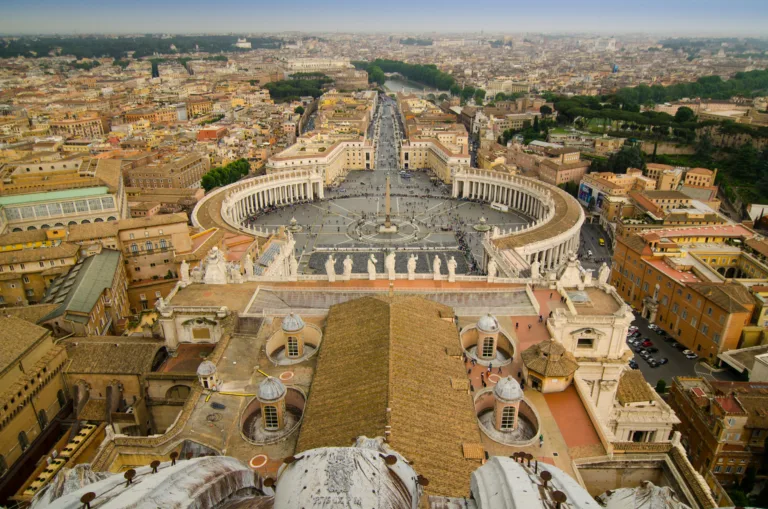Here is a list of the top 10 smallest countries in the world by population
1.Vatican
2.Tuvalu
3.Nauru
4.Palau
5.San Marino
6.Monaco
7.Liechtenstein
8.Marshall Islands
9.Saint Kitts and Nevis
10.Dominica
1.Vatican City
Population:764
Vatican City is the smallest country in the world by both area and population.
Location: Enclave within Rome, Italy
Government: Absolute elective monarchy (theocratic, with the Pope as the head of state)
Area: Approximately 44 hectares (110 acres)
Population:764
Key Features
Population
- Vatican City has a very small population, consisting mainly of clergy, including the Pope, members of the Swiss Guard, and other ecclesiastical officials.
- Many of the residents are temporary or hold dual citizenship with other countries.
Governance
- The Pope holds supreme power over Vatican City, making it an absolute monarchy. The Pope is elected by the College of Cardinals.
- The Vatican has its own legal system, postal service, and media, including Vatican Radio and the Vatican newspaper, L’Osservatore Romano.
Economy
- The economy of Vatican City is supported by contributions from Roman Catholics around the world (known as Peter’s Pence), the sale of postage stamps and publications, museum admission fees, and the sale of souvenirs.
Cultural and Historical Significance
- Vatican City is the spiritual and administrative center of the Roman Catholic Church.
- It is home to St. Peter’s Basilica, the Sistine Chapel, and the Vatican Museums, which house some of the world’s most renowned art and artifacts.
Security
- The Swiss Guard is responsible for the security of the Pope and Vatican City. This small military force has been protecting the Pope since 1506.
Diplomacy
- Despite its small size, Vatican City maintains diplomatic relations with many countries and has a significant influence on international affairs through the Holy See.

2.Tuvalu
Population:11,204
Tuvalu is one of the smallest countries in the world by population.
Location: Polynesia, in the Pacific Ocean
Government: Parliamentary democracy and constitutional monarchy
Area: Approximately 26 square kilometers (10 square miles)
Population: Around 11,204 people
Key Features
Geography
- Tuvalu consists of nine small islands, including atolls and reef islands, spread over a large area of the Pacific Ocean.
- The islands are low-lying, with the highest elevation being about 4.6 meters (15 feet) above sea level, making Tuvalu highly vulnerable to sea level rise and climate change.
Population
- With a population of around 11,204 people, Tuvalu is one of the least populous countries in the world.
- The population is primarily Polynesian, with a culture and traditions closely related to those of Samoa and Tonga.
Economy
- The economy of Tuvalu is small and limited, with subsistence farming and fishing being the primary economic activities.
- Tuvalu earns revenue from the lease of its internet country code top-level domain (ccTLD), .tv, which is popular for television-related websites.
- Remittances from Tuvaluans working overseas, particularly in New Zealand and Australia, are an important source of income.
Climate Change
- Tuvalu is extremely vulnerable to the effects of climate change, particularly sea level rise, which threatens to inundate its low-lying islands.
- The government and people of Tuvalu are active in international forums advocating for strong action on climate change to protect their homeland.
Culture and Society
- Tuvaluan culture is rich in oral traditions, dance, and music. Traditional dances, such as the fatele, play a significant role in community gatherings.
- The society is close-knit, with strong community bonds and a communal way of life.
Governance
- Tuvalu is a parliamentary democracy with a constitutional monarchy. King Charles III is the head of state, represented locally by a Governor-General.
- The Parliament of Tuvalu, known as the Fale i Fono, consists of 16 members elected from eight constituencies.
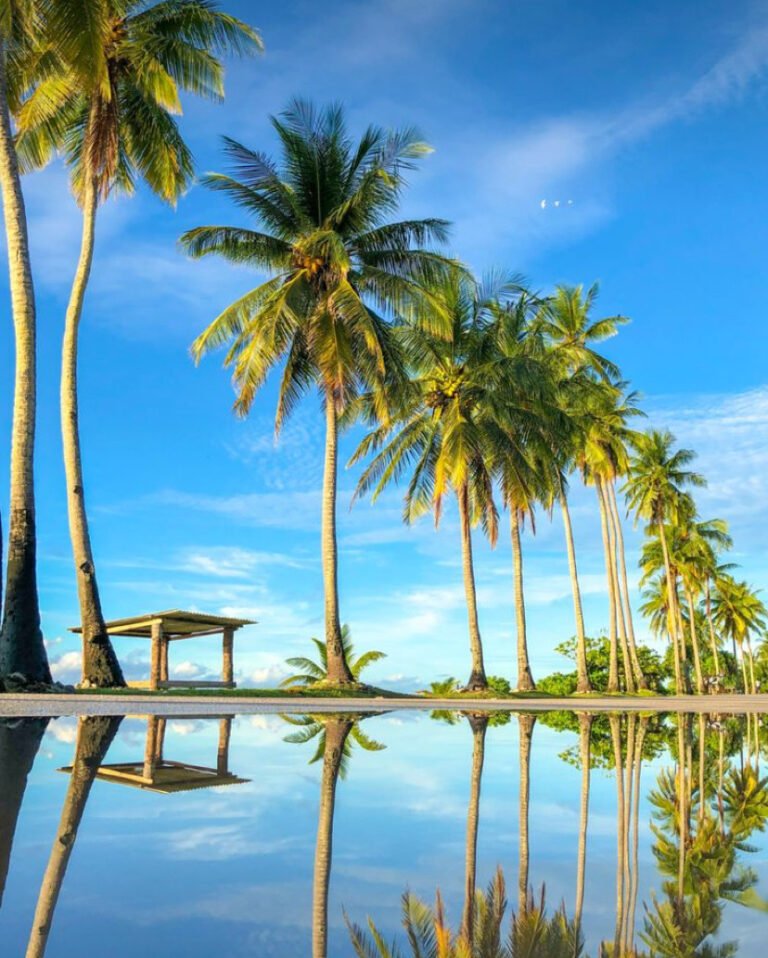
3.Nauru
Population:12511
Nauru is one of the smallest countries in the world by population.
Location: Micronesia, in the central Pacific Ocean
Government: Republic
Area: Approximately 21 square kilometers (8.1 square miles)
Population: Around 12,511 people
Key Features
Geography
- Nauru is a small, oval-shaped island country with a land area of just 21 square kilometers, making it the third smallest country by area after Vatican City and Monaco.
- The island is surrounded by a coral reef and has a central plateau known as the Topside, which is rich in phosphate deposits.
Population
- With a population of around 12,511 people, Nauru is one of the least populous countries in the world.
- The population is primarily of Nauruan ethnicity, with small communities of other Pacific Islanders, Australians, and Chinese.
Economy
- The economy of Nauru has historically been based on phosphate mining. However, the depletion of phosphate reserves has led to significant economic challenges.
- In recent years, Nauru has diversified its economy through offshore banking, fishing licenses, and hosting an Australian offshore immigration detention center.
- The country faces high unemployment rates and relies heavily on foreign aid and remittances.
Environmental Challenges
- Phosphate mining has caused extensive environmental degradation, leaving much of the island’s land barren and unusable for agriculture.
- Nauru is also vulnerable to the effects of climate change, particularly rising sea levels and extreme weather events.
Culture and Society
- Nauruan culture is influenced by its Micronesian heritage and features traditional music, dance, and crafts.
- Community and family play a central role in Nauruan society, with strong social bonds and communal living practices.
Governance
- Nauru is a republic with a parliamentary system of government. The President of Nauru serves as both head of state and head of government.
- The unicameral Parliament of Nauru consists of 19 members elected by the population.
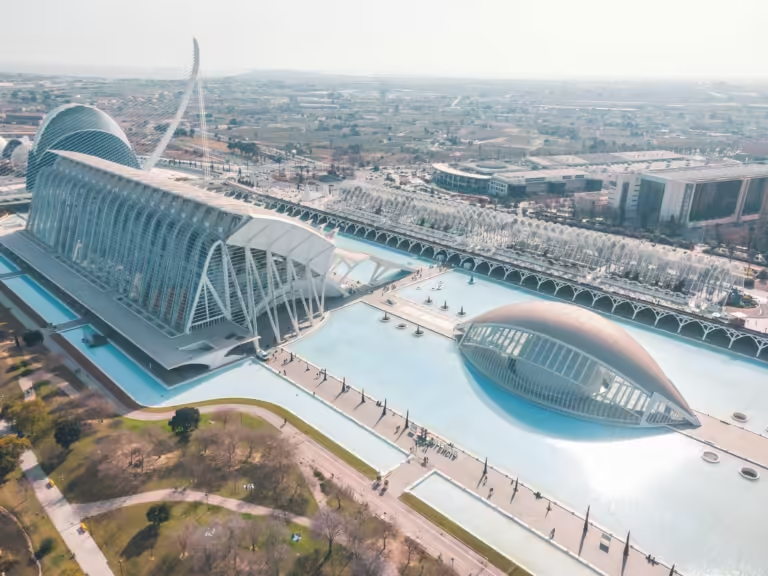
4.Palau
Population:18,024
Palau is one of the smallest countries in the world by population.
Location: Western Pacific Ocean, part of the larger island group of Micronesia
Government: Presidential republic in free association with the United States
Area: Approximately 459 square kilometers (177 square miles)
Population: Around 18,024 people
Key Features
Geography
- Palau consists of more than 340 islands, with the most populous being Koror, Babeldaob, Peleliu, and Angaur.
- The islands are known for their stunning natural beauty, including pristine beaches, clear blue waters, and rich marine biodiversity.
Population
- With a population of around 18,024 people, Palau is one of the least populous countries in the world.
- The population is primarily of Palauan ethnicity, with minorities including Filipinos, Chinese, and other Pacific Islanders.
Economy
- The economy of Palau is largely based on tourism, particularly ecotourism and diving, thanks to its diverse marine life and natural beauty.
- Other significant sectors include agriculture, fishing, and government services.
- Palau receives financial assistance from the United States under the Compact of Free Association, which supports its development and infrastructure projects.
Environmental Conservation
- Palau is a global leader in environmental conservation, having established one of the world’s largest marine sanctuaries, the Palau National Marine Sanctuary.
- The country is committed to preserving its natural resources and biodiversity, implementing measures to protect its coral reefs, marine life, and forests.
Culture and Society
- Palauan culture is influenced by its Micronesian heritage and features traditional practices, such as story-telling, dance, and music.
- Strong community ties and respect for elders are central to Palauan society, with customs and traditions playing a significant role in daily life.
Governance
- Palau is a presidential republic, with the President serving as both head of state and head of government.
- The bicameral National Congress (Olbiil Era Kelulau) consists of the Senate and the House of Delegates, with members elected by the people.
- Palau maintains a close relationship with the United States, which provides defense, funding, and access to social services under the Compact of Free Association.
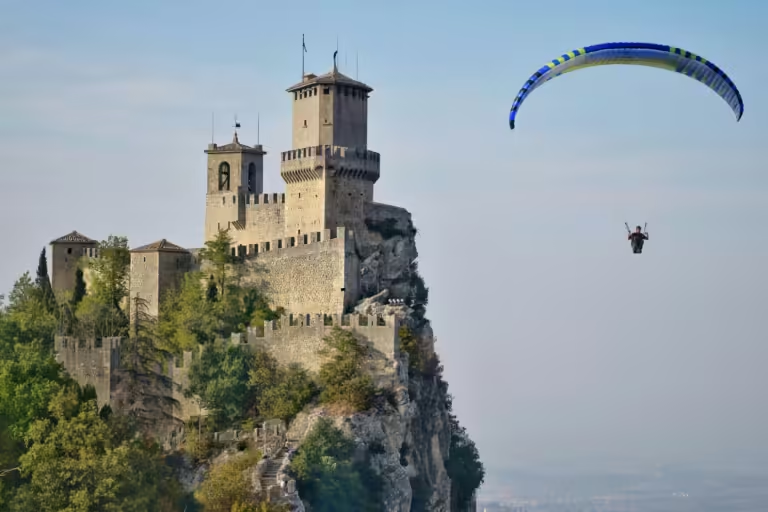
5.San Marino
Population:34,000
San Marino is one of the smallest countries in the world by population.
Location: Southern Europe, completely surrounded by Italy
Government: Parliamentary representative democratic republic
Area: Approximately 61 square kilometers (24 square miles)
Population: Around 34,000 people
Key Features
Geography
- San Marino is a landlocked microstate situated on the northeastern side of the Apennine Mountains.
- The terrain is rugged, with Mount Titano being the most prominent feature. The country has picturesque medieval architecture and scenic landscapes.
Population
- With a population of around 34,000 people, San Marino is one of the smallest countries in the world by population.
- The population is primarily of Sammarinese ethnicity, with Italian being the most commonly spoken language.
Economy
- San Marino has a stable and prosperous economy, primarily based on finance, industry, services, and tourism.
- The country has a well-developed banking sector and is known for its low taxes, which attract foreign businesses.
- Tourism is a significant contributor to the economy, with many visitors attracted to its historic sites, museums, and events.
Culture and Society
- San Marino has a rich cultural heritage with traditions and customs that reflect its long history. It is one of the world’s oldest republics, founded in A.D. 301.
- The country celebrates numerous festivals and events, such as the Feast of San Marino and Liberation Day, which commemorate important historical moments.
Governance
- San Marino is a parliamentary representative democratic republic. The Captains Regent are the heads of state and government, elected every six months by the Grand and General Council.
- The Grand and General Council is the legislative body, consisting of 60 members elected by proportional representation.
- San Marino maintains a policy of neutrality and has diplomatic relations with many countries.
Historical Significance
- San Marino claims to be the oldest surviving sovereign state and constitutional republic in the world.
- The country has preserved its independence and maintained its institutions through various historical challenges, including conflicts in Europe.
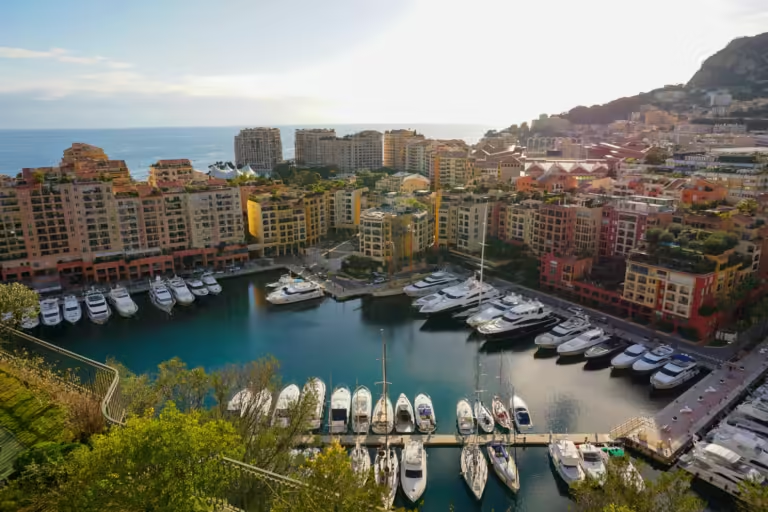
6.Monaco
Population:36,686
Monaco is one of the smallest countries in the world by population.
Location: Western Europe, on the Mediterranean coast, bordered by France
Government: Constitutional monarchy with a parliamentary system
Area: Approximately 2.02 square kilometers (0.78 square miles)
Population: Around 36,686 people
Key Features
Geography
- Monaco is located on the French Riviera in Western Europe. It is the second smallest country in the world by area, after Vatican City.
- The terrain is rugged and hilly, with a narrow coastal strip along the Mediterranean Sea.
Population
- With a population of around 36,686 people, Monaco is one of the least populous countries in the world.
- The population is highly diverse, with a mix of Monegasques (native Monégasque people), French, Italians, and other nationalities.
Economy
- Monaco has a highly developed economy with a strong focus on finance, banking, tourism, and real estate.
- The country is known for its favorable tax policies, which attract wealthy individuals and businesses.
- Tourism is a significant contributor to the economy, with attractions such as the Monte Carlo Casino, the Monaco Grand Prix, and luxury hotels.
Culture and Society
- Monaco has a rich cultural heritage with influences from France and Italy. It hosts numerous cultural events, including the Monaco Yacht Show, the Monte Carlo International Circus Festival, and the Monte Carlo Television Festival.
- The official language is French, but Italian and English are also widely spoken.
Governance
- Monaco is a constitutional monarchy, with Prince Albert II serving as the head of state.
- The country has a unicameral legislative body called the National Council, which is elected by the citizens.
- Monaco has a unique relationship with France, which provides military defense and other services under various treaties.
Historical Significance
- Monaco has a long history dating back to the ancient Greeks and Romans. The current ruling family, the House of Grimaldi, has been in power since 1297.
- The country has maintained its independence through various historical challenges and has a reputation for political stability.
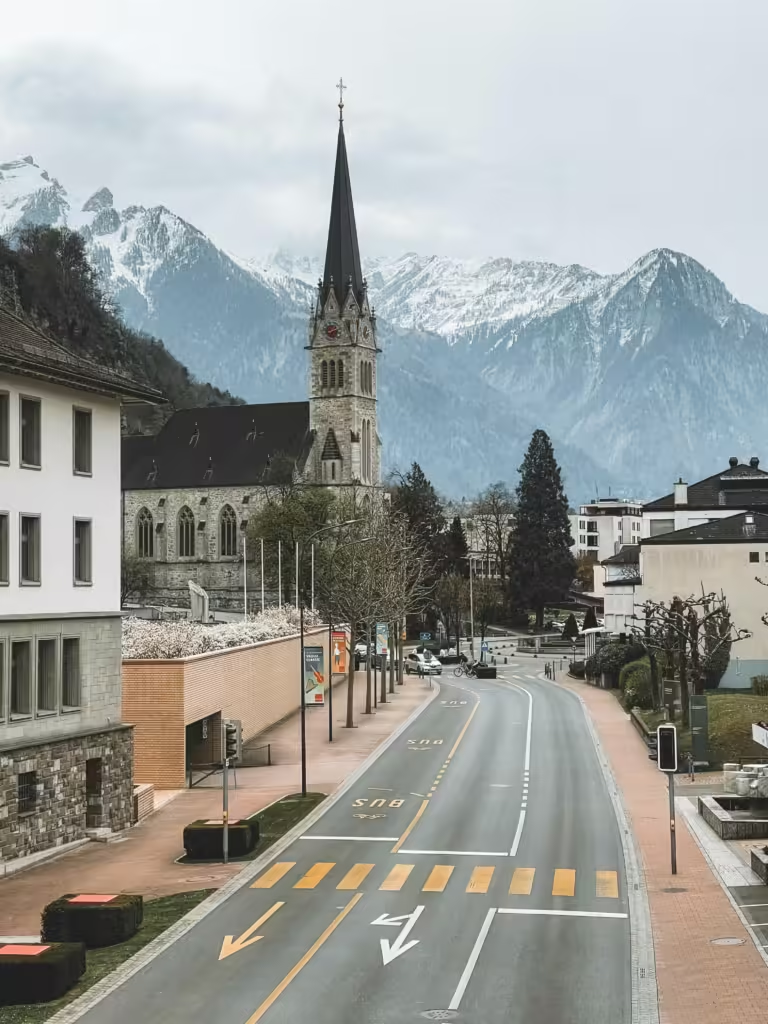
7.Liechtenstein
Population:39,584
Liechtenstein is one of the smallest countries in the world by population.
Location: Central Europe, bordered by Switzerland to the west and south and Austria to the east and north
Government: Constitutional monarchy
Area: Approximately 160 square kilometers (62 square miles)
Population: Around 39,584 people
Key Features
Geography
- Liechtenstein is a landlocked country located in the Alps, characterized by mountainous terrain and the Rhine River valley.
- The capital city is Vaduz, while the largest municipality is Schaan.
Population
- With a population of around 39,584 people, Liechtenstein is one of the least populous countries in the world.
- The population is primarily of Germanic ethnicity, with German being the official language.
Economy
- Liechtenstein has a highly developed and prosperous economy with a strong focus on financial services, manufacturing, and high-tech industries.
- The country is known for its favorable tax regime, attracting numerous international businesses and financial institutions.
- It also has a well-developed industrial sector, including electronics, machinery, and pharmaceuticals.
Culture and Society
- Liechtenstein has a rich cultural heritage with influences from neighboring Switzerland and Austria.
- The country celebrates numerous traditional festivals, including the National Day on August 15th, which features fireworks, music, and public celebrations.
- The Liechtenstein National Museum and the Kunstmuseum Liechtenstein are important cultural institutions.
Governance
- Liechtenstein is a constitutional monarchy with a parliamentary system. The Prince of Liechtenstein is the head of state, and the head of government is the Prime Minister.
- The unicameral parliament, known as the Landtag, consists of 25 members elected by the citizens.
- Liechtenstein has a unique form of governance where the Prince has significant powers, including the ability to veto legislation and dissolve parliament.
Historical Significance
- Liechtenstein’s history dates back to the early Middle Ages. It became a principality within the Holy Roman Empire in 1719 and gained full sovereignty in 1866.
- The country has maintained its independence and neutrality through various European conflicts and has a reputation for political stability and economic prosperity.
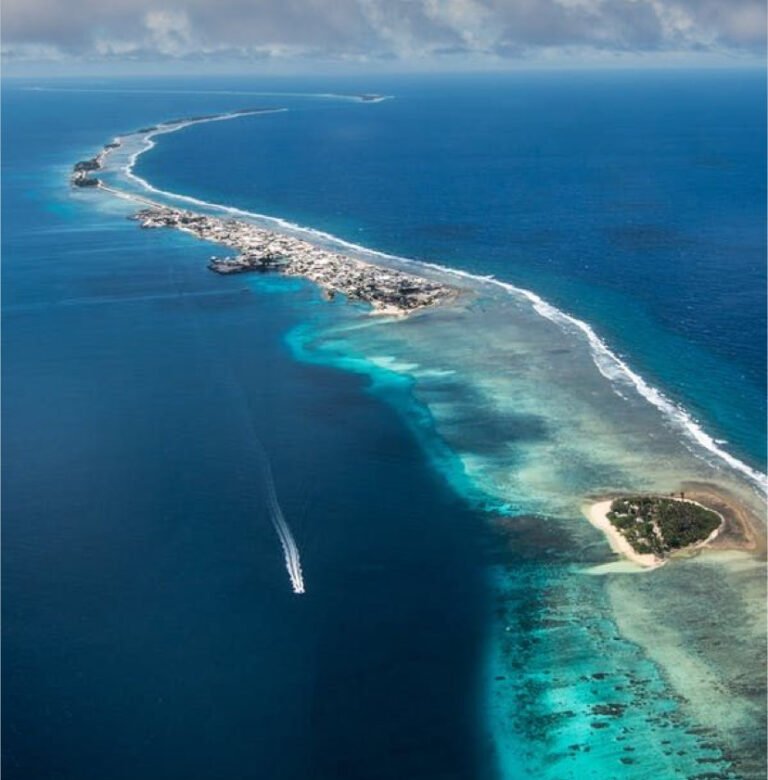
8.Marshall Islands
Population: 42,050
The Marshall Islands is one of the smallest countries in the world by population.
Location: Central Pacific Ocean, part of the larger island group of Micronesia
Government: Presidential republic in free association with the United States
Area: Approximately 181 square kilometers (70 square miles)
Population: Around 42,050 people
Key Features
Geography
- The Marshall Islands consists of 29 atolls and 5 individual islands, totaling over 1,100 islands and islets. The largest atolls include Majuro, which is the capital, and Kwajalein.
- The islands are low-lying, with the highest elevation being about 10 meters (33 feet) above sea level, making them vulnerable to sea level rise and climate change.
Population
- With a population of around 42,050 people, the Marshall Islands is one of the least populous countries in the world.
- The population is primarily of Marshallese ethnicity, with a significant proportion living in the capital, Majuro, and Ebeye in the Kwajalein Atoll.
Economy
- The economy of the Marshall Islands is primarily based on services, with a significant contribution from U.S. aid under the Compact of Free Association.
- Other important sectors include fishing, agriculture (mainly subsistence farming), and the leasing of land to the U.S. military on Kwajalein Atoll.
- The country faces economic challenges, including limited natural resources, a narrow economic base, and reliance on imports for many goods.
Environmental Challenges
- The Marshall Islands is extremely vulnerable to the effects of climate change, particularly rising sea levels, which threaten to inundate its low-lying atolls.
- The country is actively involved in international efforts to address climate change and advocate for the protection of small island nations.
Culture and Society
- Marshallese culture is rich in traditions, including navigation, weaving, and traditional music and dance.
- The Marshallese language, alongside English, is widely spoken and plays a central role in cultural identity and heritage.
Governance
- The Marshall Islands is a presidential republic with a bicameral legislature, known as the Nitijela, consisting of 33 members elected by the people.
- The President of the Marshall Islands is both the head of state and head of government.
- The country has a close relationship with the United States, which provides defense, funding, and access to social services under the Compact of Free Association.
Historical Significance
- The Marshall Islands has a complex history, including periods of colonization by Spain, Germany, Japan, and administration by the United States.
- The country gained independence in 1986 and continues to maintain strong ties with the U.S. and other Pacific island nations.
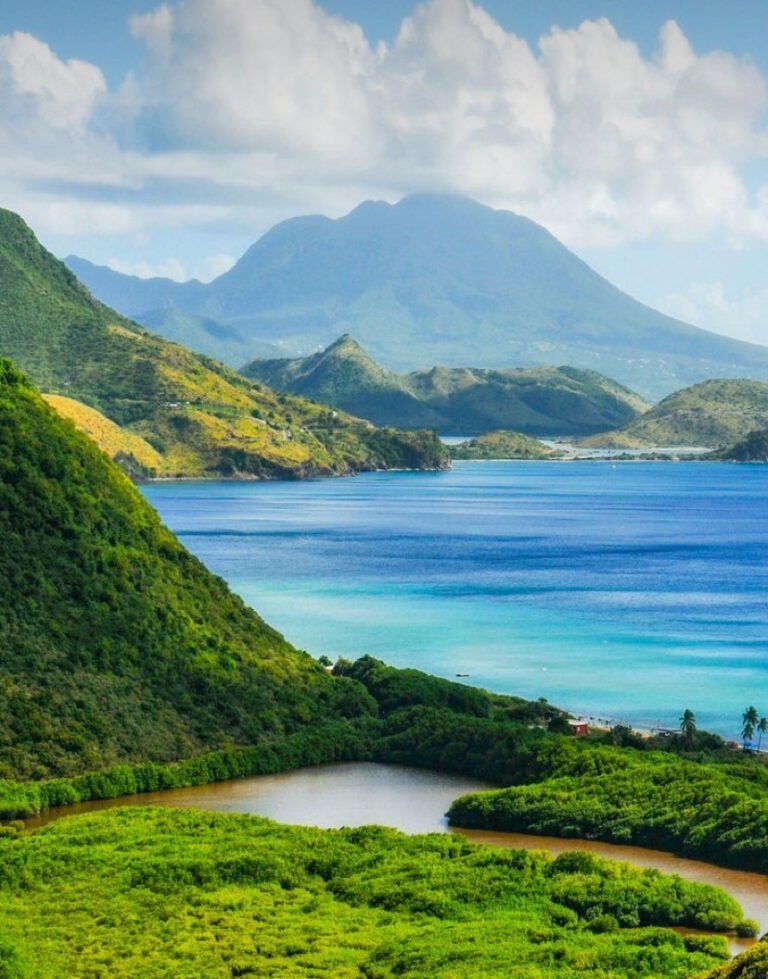
9.Saint Kitts and Nevis
Population:47,606
Saint Kitts and Nevis is one of the smallest countries in the world by population.
Location: Eastern Caribbean, in the West Indies
Government: Federal parliamentary constitutional monarchy
Area: Approximately 261 square kilometers (101 square miles)
Population: Around 47,606 people
Key Features
Geography
- Saint Kitts and Nevis is a two-island country in the Caribbean. Saint Kitts is the larger of the two islands, while Nevis is smaller.
- The islands are of volcanic origin and feature central mountain ranges, lush rainforests, and beautiful beaches.
- The capital, Basseterre, is located on Saint Kitts, while Charlestown is the main town on Nevis.
Population
- With a population of around 47,606 people, Saint Kitts and Nevis is one of the least populous countries in the world.
- The population is primarily of African descent, with a small percentage of people of European, Indian, and mixed descent. English is the official language.
Economy
- The economy of Saint Kitts and Nevis is primarily based on tourism, agriculture, and light manufacturing.
- Tourism is a major contributor to the economy, with visitors attracted by the islands’ natural beauty, beaches, and historical sites.
- The country has a Citizenship by Investment program, which allows foreign investors to obtain citizenship in exchange for a substantial investment in the local economy.
- Agriculture, including the cultivation of sugarcane, once dominated the economy but has declined in importance.
Culture and Society
- Saint Kitts and Nevis has a rich cultural heritage with influences from African, British, French, and Carib cultures.
- The islands celebrate numerous festivals and events, including Carnival, Culturama, and the St. Kitts Music Festival.
- Traditional music genres include calypso, soca, and reggae, while cricket and soccer are popular sports.
Governance
- Saint Kitts and Nevis is a federal parliamentary constitutional monarchy, with Queen Elizabeth II as the head of state, represented by a Governor-General.
- The Prime Minister is the head of government, and there is a bicameral parliament consisting of the National Assembly and the Senate.
- The country has a unique political system where Nevis has its own island administration and considerable autonomy, with the right to secede from the federation.
Historical Significance
- The islands have a complex history, including colonization by the British and French, and a significant role in the Atlantic slave trade.
- Saint Kitts and Nevis gained independence from the United Kingdom in 1983, becoming the smallest sovereign state in the Americas in terms of both area and population.
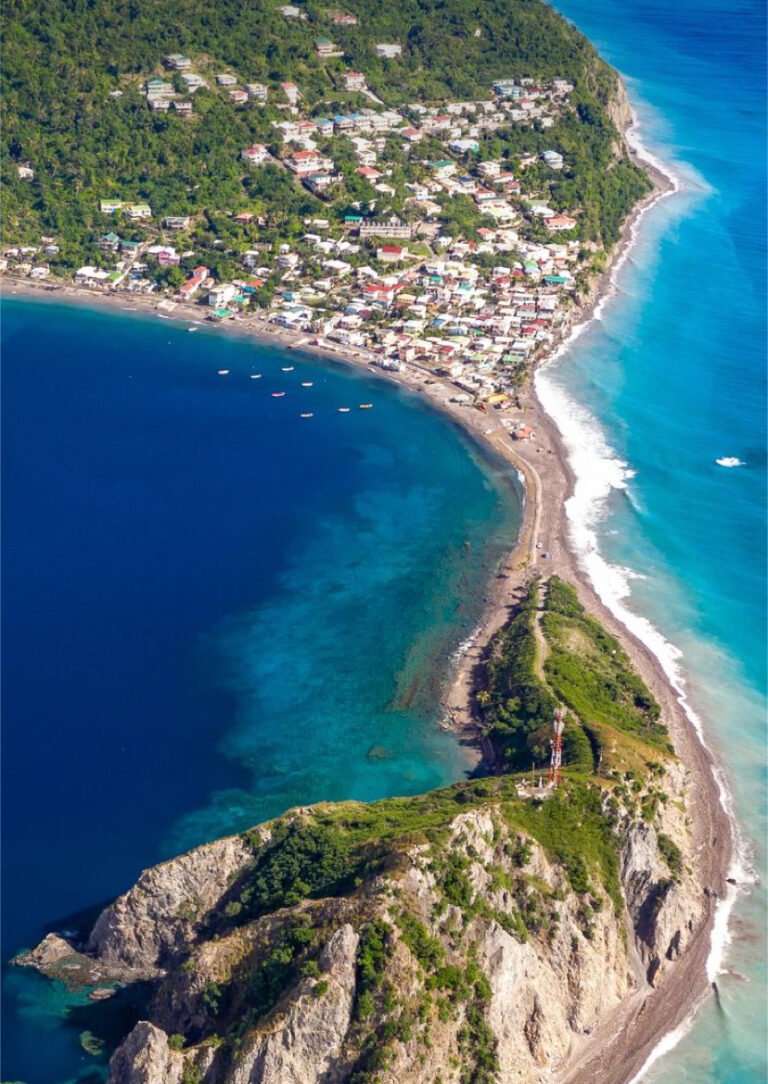
10.Dominica
Population:72,412
Dominica is one of the smallest countries in the world by both area and population.
Location: Eastern Caribbean, between the French islands of Guadeloupe and Martinique
Government: Unitary parliamentary republic
Area: Approximately 750 square kilometers (290 square miles)
Population: Around 72,412 people
Key Features
Geography
- Dominica is known as the “Nature Island of the Caribbean” due to its lush, mountainous rainforests, extensive natural parks, and numerous waterfalls.
- The island is home to the world’s second-largest hot spring, Boiling Lake, and has the highest mountains in the Eastern Caribbean.
- The capital and largest city is Roseau.
Population
- With a population of around 72,412 people, Dominica is one of the least populous countries in the world.
- The population is primarily of African descent, with minorities of European and indigenous Kalinago descent. English is the official language, and a French-based Creole is also widely spoken.
Economy
- The economy of Dominica is primarily based on agriculture, tourism, and services. Agriculture, particularly banana production, has historically been a significant sector but has declined in recent years.
- The island is focusing on eco-tourism, leveraging its natural beauty and biodiversity to attract visitors.
- Dominica also has a Citizenship by Investment program, similar to some other Caribbean nations, which allows foreign investors to obtain citizenship in exchange for a substantial investment.
Culture and Society
- Dominica has a rich cultural heritage influenced by African, Carib, French, and British traditions.
- The country celebrates numerous festivals, including the World Creole Music Festival and Carnival, which are important cultural events.
- Dominica is one of the few Caribbean islands with a surviving population of indigenous people, the Kalinago, who have a designated territory on the island.
Governance
- Dominica is a unitary parliamentary republic with a President as the head of state and a Prime Minister as the head of government.
- The unicameral House of Assembly consists of elected representatives and appointed senators.
- The country has a stable political environment and is a member of the Commonwealth of Nations.
Environmental Focus
- Dominica is highly committed to environmental preservation and sustainability. The island has extensive protected areas and is working towards becoming the world’s first climate-resilient nation.
- The government has invested in renewable energy sources, particularly geothermal energy, to reduce dependence on fossil fuels.

